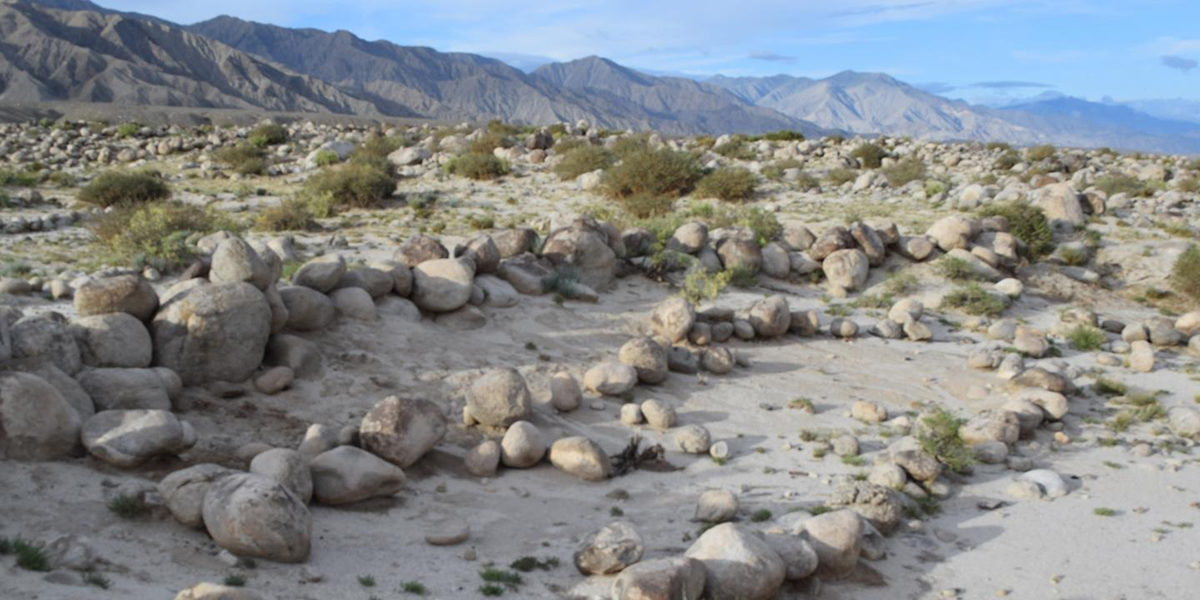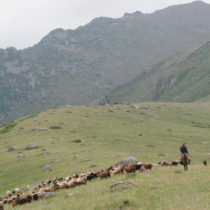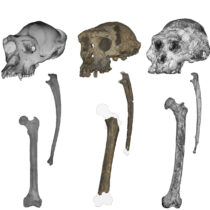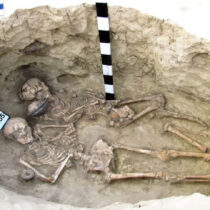Using satellite imaging and drone reconnaissance, archaeologists from Washington University in St. Louis have discovered an ancient irrigation system that allowed a farming community in arid northwestern China to raise livestock and cultivate crops in one of the world’s driest desert climates.
Lost for centuries in the barren foothills of China’s Tian Shan Mountains, the ancient farming community remains hidden in plain sight — appearing little more than an odd scattering of round boulders and sandy ruts when viewed from the ground.
Surveyed from 30 meters above using drones and specialized image analysis software, the site shows the unmistakable outlines of check dams, irrigation canals and cisterns feeding a patchwork of small farm fields. Initial test excavations also confirm the locations of scattered farmhouses and grave sites, said Yuqi Li, a doctoral student in the Department of Anthropology in Arts & Sciences who discovered the site with grant support from the National Geographic Society.
The ‘agropastoralists’
Preliminary analysis, as detailed by Li and co-authors in the December issue of the journal Archaeological Research in Asia, suggests that the irrigation system was built in the 3rd or 4th century AD by local herding communities looking to add more crop cultivation to their mix of food and livestock production.
“As research on ancient crop exchanges along the Silk Road matures, archaeologists should investigate not only the crops themselves, but also the suite of technologies, such as irrigation, that would have enabled ‘agropastoralists’ to diversify their economies,” Li said.
“In recent years, more and more archaeologists started to realize that most of the so-called pastoralist/nomad communities in ancient Central Asia were also involved in agriculture,” Li added. “We think it’s more accurate to call them agropastoralists, because having an agricultural component in their economy was a normal phenomenon instead of a transitional condition.”
A small-scale irrigation system
The site investigated provides researchers with a remarkably well-preserved example of a small-scale irrigation system that early farmers devised to grow grain crops in a climate that historically receives less than 3 inches (66 millimeters ) of annual rainfall — about one-fifth of the water deemed necessary to cultivate even the most drought-tolerant strains of millet.
Researchers believe the site was used to cultivate millet, barley, wheat and perhaps grapes.
Researchers have identified seven areas along the Mohuchahan River where ancient irrigation systems once functioned.
The discovery is important, Li said, because it helps to resolve a long-running debate over how irrigation technologies first made their way into this arid corner of China’s Xinjiang region.
Techniques adopted before Han dynasty
While some scholars suggest that all major irrigation techniques were first brought here by the troops of China’s Han Dynasty (206 B.C.-220 A.D.), Li’s study suggests that local agropastoral communities adopted many arid-climate irrigation techniques before the Han dynasty and kept using them to the post-Han era.
A stream known as the Mohuchahan River drains the valley and carries a seasonal trickle of snow-melt and scarce rainfall down from the mountains before vanishing in the sands of China’s vast Taklamakan Desert.
The Tian Shan Mountains, which form the northern border of this desert, are part of a chain of mountain ranges that have long served as a central corridor for the prehistoric Silk Road routes between China and the Near East.
“Given recent research on the routes of early crop exchanges, it is possible that the technological ‘know-how’ of irrigation in this region originated with earlier agropastoral traditions in western Central Asia,” Li added. “As a fundamental technology that underpinned the agropastoralist societies in Xinjiang, irrigation probably spread to Xinjiang through the Inner Asian Mountain Corridor along with crops during prehistory.”




